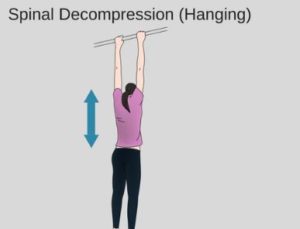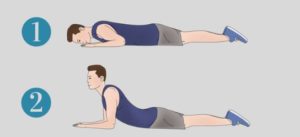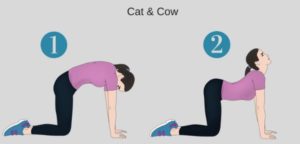How to Avoid Surgery if You Have a Lumbar Herniated Disc
If you’ve been diagnosed with a ruptured or herniated disc in your back, then you’re likely suffering from muscle spasms, sharp/dull pain, cramping, leg weakness or loss of function, and/or sciatica. Your pain likely intensifies with coughing, sneezing, or bending. Herniated discs can be very painful injuries that impact your day-to-day life. The good news is that you don’t necessarily have to get surgery to repair your herniated disc. In fact, studies have shown that 90% of patients were able to recover by pursuing non-surgical courses of treatment. The following exercises, in conjunction with proper physical therapy treatment, can help relieve your symptoms and strengthen your back muscles.
How Does a Herniated Disc Happen?
Before we get into the exercises, it’s important to know what a herniated disc is and how it’s caused.
In between each of the vertebrae in your lumbar spine, there is a shock absorbing “pad,” this is called a disc. The purpose of these discs is to protect the spine from daily activities, like walking, running, jumping, etc. Each disc has two parts: a soft, gel-like inner ring, and a touch outer ring. When your outer ring is injured or weak, it may allow the inner ring protrude out. This is commonly known as a herniated disc.
Common causes for a slipped or herniated disc are age, being overweight, weak muscles, and/or a sedentary lifestyle. You may be at increased risk for a herniated disc if you often turn or twist your back while lifting objects, or if you use tobacco or have poor posture.
Note: the images in this article are all copyright backintelligence.com
1. Decompress your spine
– Find something you can hang from, like a bar or the top of a doorframe.
– Reach overhead and hold the bar with an overhand grip.
– Allow yourself to hang for 30 seconds.
– Repeat 3 times.

Copyright backintelligence.com
This exercise will take pressure off your discs by creating space between your vertebrae.
2. Prone extension
– Lie on your stomach.
– Put your forearm on the floor next to your body, so that your elbow is bent at a 45 degree angle.
– Slowly prop yourself up on your elbows, keeping your hips in contact with the floor
– Continue to prop yourself up until your elbows are bent at a 90 degree angle.
– Hold the upwards position for 10-15 seconds before returning to your starting position.
– Repeat the stretch 10 times, gradually increasing the time you hold the upward position until you reach 30 seconds.

Copyright backintelligence.com
This stretch will aid in pushing the disc back towards the center to improve the healing process. When you’re performing this stretch, your goal should be “centralization of symptoms,” meaning that the pain that typically travels down your affected leg should come back up, closer to your lower back. This exercise may be hard to tolerate at first, so proceed slowly and with caution.
3. Cat-Cow
– Begin on your hands and knees.
– As you inhale, let your stomach “drop” towards the floor and look up towards the ceiling.
– Slowly exhale, rounding your spine (upwards, towards the ceiling) while using your hands to press into the floor and slightly curving your neck to look at your feet.
– Do 2-3 sets of 10.

Copyright backintelligence.com
This stretch will open the intervertebral disc space, helping to relieve pressure on the herniated disc while improving the mobility of the spine.
While these exercises may help to relieve your pain and speed up your recovery process, you should still seek medical advice before performing these stretches, and utilize them in conjunction with a physical therapy treatment plan. To book an appointment, give us a call at 800-PT-FIRST or send us a request through http://www.physicaltherapyfirst.com/contactus/
*As a reminder, always discuss any questions or concerns with your physician regarding your own health and dietary needs, as the information written should not replace any medical advice.
